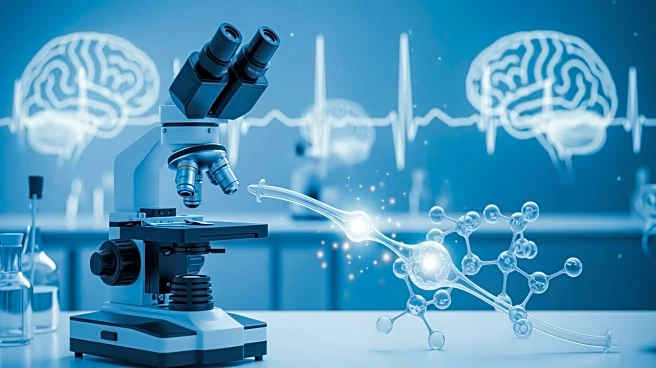What's Happening?
Researchers have discovered that microglia, immune cells in the brain, can shift into a protective mode by reducing levels of a molecule called PU.1. This shift helps calm harmful inflammation and supports
cognitive abilities, potentially reducing Alzheimer's symptoms. The study, conducted using Alzheimer's mouse models, human cells, and donated human brain tissue, highlights the powerful influence of these protective microglia despite their small numbers. The findings suggest that targeting microglia could alter the course of Alzheimer's disease, offering new therapeutic approaches.
Why It's Important?
The discovery of microglia's protective role in Alzheimer's disease is significant as it opens new avenues for treatment. By understanding how microglia can be shifted into a protective state, researchers can develop therapies that specifically target these cells, potentially slowing or preventing the progression of Alzheimer's. This could have a profound impact on public health, given the prevalence of Alzheimer's and its burden on patients, families, and healthcare systems. The study also emphasizes the importance of international scientific collaboration in advancing complex fields like neurodegeneration.
What's Next?
Future research may focus on developing drugs or interventions that can effectively reduce PU.1 levels in microglia, thereby enhancing their protective functions. Clinical trials could be initiated to test the efficacy and safety of such treatments in humans. Additionally, further studies might explore the genetic factors that influence microglia's protective states, potentially leading to personalized medicine approaches for Alzheimer's patients.
Beyond the Headlines
The study highlights the shared logic of immune regulation across different cell types, suggesting that insights from microglia could inform broader immunotherapeutic strategies. Understanding the genetic links between PU.1 levels and Alzheimer's risk may also provide clues for other neurodegenerative diseases, potentially leading to breakthroughs in treatment and prevention.












